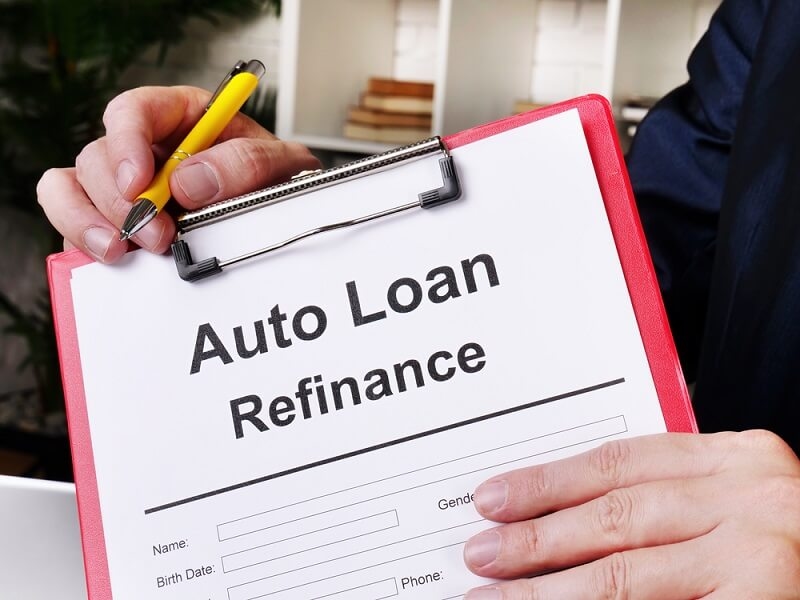Car Loan Refinance Guide: When & How to Lower Your EMIs?

If you're a U.S. auto-loan borrower who is looking for some relief on high monthly payments, then this idea of a car loan refinance can be a strategic move. When well-executed, refinancing your auto loan allows you to achieve substantial interest reduction, compare and switch to a better lender by making a considered lender comparison, and benefit from any credit improvement of your own over time. This guide will walk through what a car loan refinance is, when it makes sense to refinance, how to do it step by step, and provide practical refinancing tips to help consumers reduce their EMIs while keeping an eye on long-term savings.
Understanding Car Loan Refinance
Car loan refinance merely refers to the replacement of your existing auto loan with a new one, generally through a different lender or under renegotiated terms. The aim is usually to get a better interest rate, favorable terms, or a reduced monthly payment. Refinancing is not just about bringing down the EMI; in fact, it is reshaping the loan to suit your current financial standing and goals.
Key Benefits
- You may be able to get a lower rate due to improved credit profile and changed market conditions.
- Lowering your monthly payment by adjusting the term, rate, or both.
- Giving yourself more payment flexibility or freeing up cash flow for other uses.
- Taking advantage of a lender comparison so that you don’t end up with suboptimal terms.
- If you've made any progress toward improving your credit, you'd be putting such progress into practical and actual use.
Refinancing your car loan is not just about ease, but smart financial management, when done thoughtfully.
When to Consider a Refinance
Not every situation calls for the refinancing of a car loan. Here are the main cases when refinancing makes sense:
- Improved credit profile: If your credit score has gone up-for example, from "fair" to "good" or "very good," then you might qualify for improved interest rates. That ties in directly to the ability to reduce interest.
- High current interest rate: When you locked in a high rate upon getting the original auto loan, or market rates have dropped significantly since then, refinancing can yield lower costs.
- The monthly installments become a burden: If your budget has shrunk and you need to reduce your EMI, refinancing could bring relief-provided you don't extend the term too long and pay more overall.
- You still have much time left on the original loan: The payoff for switching is higher when you have a lot of months to go. Very late in the term, there's usually very little benefit remaining.
- Stable vehicle value and equity: If you owe less than what the car is currently worth—positive equity—and the vehicle is in great condition, then lenders become more willing; this is particularly relevant to your lender comparison opportunity.
- You want to switch lenders or terms: Maybe you aren't getting the best service from your current lender, or perhaps you don't like the interest rate; refinancing allows you to shop around for a better fit.
Refinance when one of the following has changed enough to be worth your while: credit, rate, term, lender
How to Refinance Your Car Loan – Refinancing Tips
Here is a practical roadmap that will lead you in refinancing your car loan:
Step 1 - Review your existing loan
Collect information on the current interest rate, APR, outstanding balance, remaining term in months, and prepayment penalties. These provide an important baseline that could help in assessing potential savings.
Step 2 - Assess Your Current Financial Status
- Check your credit score and report to see if there has been any improvement since the time of the original loan.
- Calculate your debt-to-income ratio (all debt payments versus income) to ensure you are in a good position for refinancing.
- Decide whether you have positive equity in your vehicle, meaning owing less than its worth. If you're upside down, refinancing is more difficult.
Step 3 - Compare the Lenders
The key to this is not to take your current lender's word for it. You need to shop banks, credit unions, and online lenders. Compare the interest rate (APR), loan term, any origination or transfer fees, if there are any impacts on your credit, and if the new loan has favorable terms. Book or prequalify with a variety of lenders so you can really compare.
Step 4 - Perform the Arithmetic Carefully
Determine how much interest you will pay over the remaining life of your current loan as compared to the new loan.
- Calculate your new monthly payment and see how much lower your EMI might be.
- Check the fees that refinancing will require, including the origination fee, title transfer, and any payoff penalty associated with the old loan.
- Determine your "break-even" point, about how many months it will take to recoup the refinancing costs. If you plan to keep the car past that point, the refinance makes sense.
Step 5 - Apply for and Close the Refinance Loan
After selecting the best offer from one of the lenders, you submit documentation: proof of income, driver's license, vehicle information, and your current loan payoff statement. Once approved, the refinancing lender pays off your old loan, and you begin making payments to the new lender under the terms of refinancing.
Step 6 - Management of Loans
Refinancing is not an end but a part of the greater strategy. Pay the installments on time after refinancing, not building more automotive debts; keep good credit behavior so your credit profile will continue improving. This will ensure that every future refinancing will be favorable if needed or if some other financing is needed.
How Refinancing Lowers Your EMI

One of the most tangible reasons borrowers refinance is to lower their monthly payment, or EMI. Here's how that works in practice:
- A lower interest rate reduces the interest portion of each payment, allowing more principal to be paid or the size of the payment to shrink.
- Refinancing to longer terms spreads the payments over more months, even if the rate is similar, but be aware that you'll pay more interest over the life of the loan.
- This could reduce the effective cost of the loan by shifting to a lender with fewer fees or more favorable policies, which can allow a lower monthly cost.
- If your credit has improved, you can get better terms; that's where you see actual savings and the true benefit of improving your credit.
Cutting your monthly payment is only half of the equation. If you cut the payment but significantly extend the term-say from remaining 24 months to 60 new months-you might end up paying thousands more in interest over time. Always compare the total cost.
The Role of Credit Improvement in Refinancing
Your credit profile is central to determining the favorability of your refinance. Here's why improvement in credit matters:
- Perhaps you had a worse credit score when you first took out the auto loan and got a higher rate. Over time, your credit profile has improved, with on-time payments, lower debt, and better utilization. This can get you a much better refinance rate.
- A stronger credit score reduces the perceived risk of a lender. You, therefore, enjoy better bargaining power, will have a better interest rate, and probably fewer fees.
- Keep in mind: applying for refinancing triggers a credit inquiry. That inquiry may temporarily lower your score slightly, but it's smart to time your refinance when your credit is in good shape.
- Continued strong credit behavior after refinancing ensures you maintain or improve your profile, keeping the doors open to future refinancing or any other credit product.
In short, your credit isn't just a background factor; it is a key driver of how much you will save when refinancing.
Conclusion
Car loan refinance can be one of the smartest financial decisions if done with timing, clarity, and calculation. The aim is not only to reduce your monthly EMI but also to get meaningful interest reduction and long-term savings by selecting the right time to refinance, which will ease the cash flow without paying considerably more during the lifetime of the loan. Your credit improvement plays an important role in this regard.
This content was created by AI

